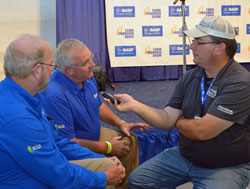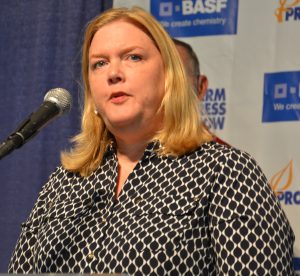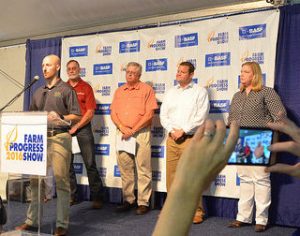 Jody Wynia’s job as a Marketing Manger for corn at Bayer means he is looking for ways to help growers defeat weeds with confidence. It’s why the company has launched their W.O.W program- Wipe Out Weeds, with seven proven products covering a wide variety of application windows and price points.
Jody Wynia’s job as a Marketing Manger for corn at Bayer means he is looking for ways to help growers defeat weeds with confidence. It’s why the company has launched their W.O.W program- Wipe Out Weeds, with seven proven products covering a wide variety of application windows and price points.
Making sure corn growers remain profitable and weed-free in a tough market requires a year-round plan, especially when uncontrolled weeds can result in a 3 bushel/acre per day loss. With corn prices around $4, that’s $84/acre per week; on a 500 acre field the math works out to $42,000 per week.
Wipe Out Weeds ia a comprehensive portfolio that makes decision making simpler. The lineup includes pre- and post- chemistries and best-in-class safeness.
“Through extended research and development, Bayer has been able to fill the pipeline with effective products that are the first of their kind,” says Wynia. “Corvus® and Balance® Flexx, the only herbicide products that use reactivation, DiFlexx® DUO and DiFlexx, which bring new safened dicamba to corn, and Liberty®, the first non-selective herbicide alternative to glyphosate, are just some of the great features that help growers stay successful. These products are proven to Wipe Out Weeds.”
Blance Flexx is also seeing an adjustment in cost. Bayer took a look at their portfolio and made the decisions necessary to offer this much-needed product at a price that works in today’s economy.
You can hear more about the W.O.W program in my interview with Jody: [wpaudio url=”http://traffic.libsyn.com/zimmcomm/FPS16-Bayer-Wynia.mp3″ text=”Jody Wynia, Bayer”]
















